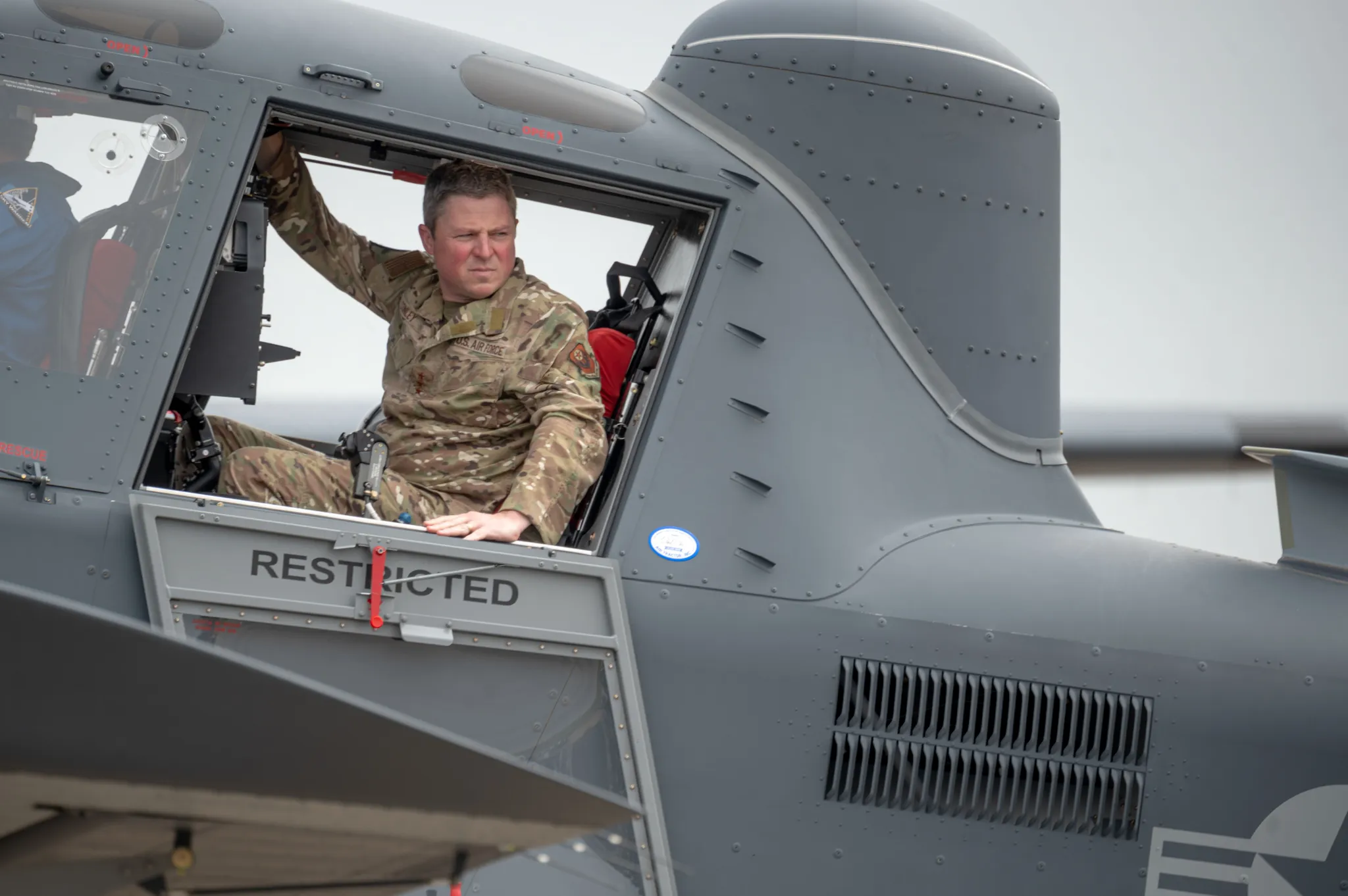First OA-1K Skyraider II Handed Over To Air Force Special Operations Command

The U.S. Air Force Special Operations Command has officially taken delivery of its first OA-1K Skyraider II — marking the start of a new chapter for a platform that’s as versatile as it is strategically uncertain. The handover ceremony at Hurlburt Field celebrated the aircraft’s arrival, with leaders framing the turboprop’s modularity as key to adapting across mission sets ranging from close air support to armed ISR. “Skyraider II represents not just a new platform, but a modular solution to our national security needs,” said Lt. Gen. Michael Conley.
Based on the rugged Air Tractor AT-802, the OA-1K can carry 6,000 pounds of munitions across eight pylons, loiter for up to six hours, and operate from austere airstrips — all at a fraction of the cost of conventional aircraft. AFSOC calls it “a dynamic aircraft” that can “create dilemmas for adversaries across the spectrum of armed conflict,” pointing to its flexibility as a strength in an era defined by shifting strategic priorities.
That flexibility may be essential. As the Pentagon pivots toward high-end competition with China and Russia, the OA-1K finds itself under scrutiny. Lawmakers and defense analysts alike are questioning where the aircraft fits amid changing missions, force structure reductions, and the divestment of legacy ISR platforms like the U-28A Draco. Gen. Langley of AFRICOM has already flagged the OA-1K as a potential gap-filler for armed ISR in Africa, while AFSOC leaders are exploring “novel mission sets” like SIGINT and border operations to maximize its utility.
After two decades of on-again, off-again light attack experiments, the delivery of the Skyraider II represents a tangible step forward. With 75 aircraft on order and training units soon to follow, AFSOC is betting that a rugged, low-cost, modular platform can stay relevant in a rapidly changing strategic landscape. Whether the OA-1K becomes a niche solution or a quietly indispensable asset will depend on how boldly the Air Force chooses to use it.